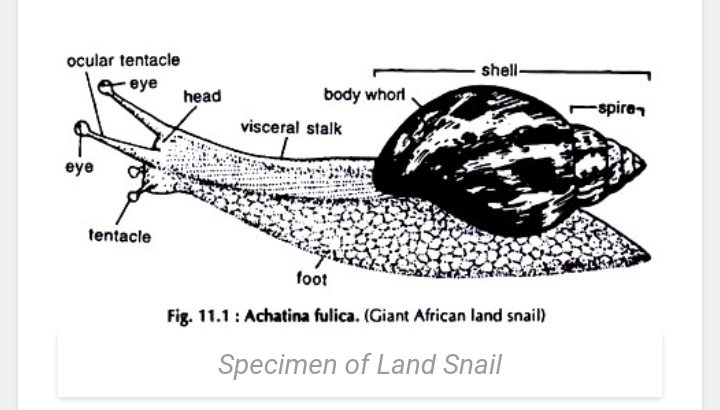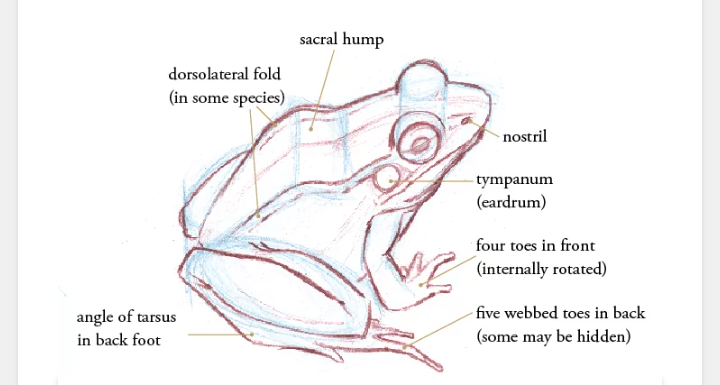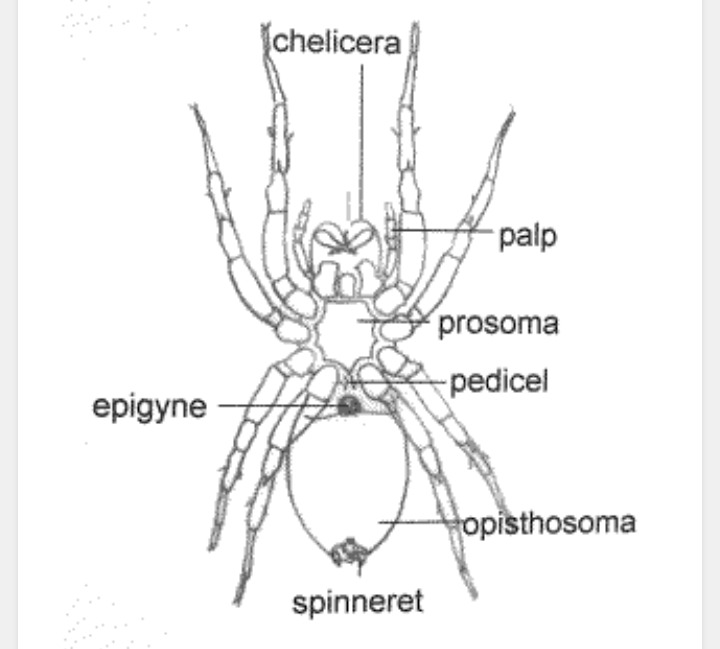NECO Biology Specimen 2023
NECO Biology Specimen 2023: Welcome to ZAMGIST where we posted complete NECO biology Practical Specimen for the 2023 examination.
Introduction:
The National Examinations Council (NECO) conducts the Biology Practical examination to assess students’ understanding and practical skills in the field of biology.
The NECO Biology Practical Specimen for the year 2023 includes various organisms and apparatus that candidates need to familiarize themselves with.
In this article, we will provide detailed information about the specimens and apparatus, as well as the instructions given to schools regarding the examination.

Instructions to Schools:
Confidentiality:
The information regarding the NECO Biology Practical Specimen 2023 is highly confidential.
Schools must ensure that candidates do not gain access to this information either directly or indirectly before the examination.
Maintaining confidentiality is crucial to ensuring a fair and unbiased examination process.
Required Materials:
Each candidate should bring the following items to the examination hall or laboratory:
(a) A sharpened pencil (HB): Candidates need a pencil for various tasks, such as labeling diagrams and writing observations.
(b) An eraser: An eraser is necessary to make corrections or remove any unwanted marks.
(c) A ruler: A ruler is essential for measuring and drawing accurate diagrams.
(d) A sharp razor blade or scalpel or knife: Candidates require a sharp cutting instrument to carry out dissections and other precise cutting tasks.
School-Provided Materials:
The school should provide the following materials for the candidates:
(i) Hand lens: A hand lens enables students to observe specimens more closely and in detail.
(ii) Petri dish: Petri dishes are used to culture microorganisms or observe small specimens.
Neco Biology Specimen 2023 Answers
During the examination, candidates will be provided with the following specimens and apparatus:

Specimen A: Land snail
Candidates will study the Morphology and Anatomy of a land snail, Reproduction and Life Cycle, focusing on its shell, locomotion, and other features.
Overview of Land Snails
Land snails are fascinating gastropod mollusks that belong to the class Gastropoda.
They are members of the phylum Mollusca and are found in diverse habitats worldwide, ranging from forests to deserts.
These remarkable creatures are known for their coiled shells, slimy mucus, and slow, graceful movements.

Morphology and Anatomy
Land snails typically have a soft, slimy body covered by a spiral-shaped shell. The shell serves as protection from predators and harsh environmental conditions.
It is composed of calcium carbonate and grows with the snail as it matures. The shell’s size, shape, and color can vary greatly between different species.
Adaptations for Terrestrial Life
Land snails have evolved various adaptations that allow them to thrive in terrestrial environments.
One crucial adaptation is the presence of a specialized respiratory organ called the pallial lung. This lung allows land snails to breathe air, enabling them to survive outside of water.
Additionally, their muscular foot aids in locomotion, allowing them to crawl on different surfaces and navigate their surroundings.
Feeding Habits
Land snails are herbivorous creatures, feeding primarily on plant material such as leaves, stems, and fruits.
They use a specialized feeding structure known as a radula, a ribbon-like structure with rows of tiny teeth, to scrape and shred plant matter.
Land snails play a vital role in ecosystem dynamics as they help decompose organic material and recycle nutrients.
Reproduction and Life Cycle
Most land snails are hermaphroditic, possessing both male and female reproductive organs.
During mating, two individuals exchange sperm, enabling them to fertilize their own eggs. After fertilization, the snail lays eggs in moist soil or leaf litter.
The eggs develop into juvenile snails, which gradually grow and undergo a process of metamorphosis to reach their adult form.
Ecological Significance
Land snails have significant ecological importance. They serve as a food source for numerous predators, including birds, rodents, and other invertebrates.
Moreover, these gastropods contribute to nutrient cycling and the breakdown of organic matter, playing a crucial role in maintaining soil health and fertility.
Specimen B: Toad
The examination will include the study of a toad, where candidates will observe its external features, such as skin texture, limbs, and other adaptations.
Overview of Toads
Toads are intriguing amphibians that belong to the family Bufonidae. They are found in various habitats worldwide, including forests, grasslands, and wetlands.
Toads are characterized by their stout bodies, short legs, and dry, warty skin. They are fascinating creatures with a close association to water during their life cycle.

Morphology and Anatomy
Toads have distinct physical features that distinguish them from other amphibians. Their skin is thick, rough, and covered in warts, which acts as a defense mechanism against predators.
They possess two parotoid glands behind their eyes that secrete toxic substances, serving as a deterrent to potential threats.
Toads also have well-developed hind limbs for hopping and swimming, allowing them to navigate both land and water environments.
Adaptations for Life on Land and in Water
Toads exhibit remarkable adaptations that enable them to thrive in both terrestrial and aquatic habitats.
They have a specialized respiratory system that allows them to breathe through their skin, known as cutaneous respiration.
This adaptation helps them absorb oxygen from the environment, particularly during their time spent on land.
Toads also have webbed feet, aiding in swimming and efficient movement in water.
Feeding Habits
Toads are carnivorous amphibians with a varied diet. They primarily feed on invertebrates such as insects, spiders, worms, and small crustaceans.
Toads have a specialized feeding mechanism where they use their sticky, retractable tongues to capture prey with remarkable precision and speed.
Their diet plays a crucial role in maintaining ecological balance by controlling populations of certain invertebrates.
Reproduction and Life Cycle of toad
Toads undergo a fascinating life cycle that involves both terrestrial and aquatic stages.
They reproduce through external fertilization, where the female releases eggs and the male fertilizes them externally.
The eggs are typically laid in water, forming long gelatinous strands. After hatching, the tadpoles emerge and undergo metamorphosis, gradually transforming into adult toads.
This life cycle showcases the intricate adaptations toads have for their unique reproductive strategies.
Ecological Significance
Toads play a vital ecological role in various ecosystems. As predators of insects and other invertebrates, they help control pest populations, benefiting agricultural systems.
Additionally, toads serve as prey for numerous predators, contributing to the intricate food web dynamics.
Their presence in freshwater ecosystems can also indicate the health and quality of these habitats, making them valuable bioindicators.
Specimen C: Spider
Candidates will have the opportunity to examine a spider and learn about its body structure, web-building behavior, and unique adaptations.
Overview of Spiders
Spiders are intriguing arachnids that belong to the class Arachnida.
They are found in diverse habitats worldwide, ranging from forests to deserts, and even in your very own backyard.
Spiders are known for their eight legs, multiple pairs of eyes, and the ability to spin silk, which they use for various purposes.

Morphology and Anatomy
Spiders possess a distinct body structure that sets them apart from other arthropods.
They have a cephalothorax and an abdomen, with their legs attached to the cephalothorax.
Spiders come in various sizes, colors, and patterns, showcasing remarkable diversity within the arachnid world.
Additionally, they have specialized structures called spinnerets located at the end of their abdomen, which produce silk used for various functions.
Adaptations for Predation
Spiders have evolved remarkable adaptations that make them efficient predators. Their ability to produce silk allows them to construct intricate webs, which they use to catch prey.
Some spiders, known as hunting spiders, do not rely on webs but instead chase and capture their prey using their speed and agility.
Venomous fangs, located near their mouthparts, enable spiders to inject venom into their prey, immobilizing or digesting them.
Silk Production and Web Construction
Silk is a remarkable substance produced by spiders from specialized glands located within their abdomen.
Spiders utilize silk for a variety of purposes, including web construction, prey capture, shelter creation, and even reproduction.
Each spider species has unique silk properties, resulting in diverse web designs, from orb webs to funnel webs, sheet webs, and more.
The complexity and beauty of spider webs are a testament to the ingenuity of these arachnids.
Reproduction and Life Cycle of Spider
Spiders exhibit diverse reproductive strategies. Mating often involves intricate courtship rituals, where males display specific behaviors to attract females.
Females lay eggs enclosed in silk sacs, which they carefully guard. After hatching, spiderlings emerge and undergo a series of molts as they grow into adulthood.
Some spider species exhibit parental care, with the female protecting and providing for her offspring.
Ecological Significance
Spiders play a crucial ecological role as predators of insects and other arthropods.
They help control populations of potential pests, maintaining the balance within ecosystems.
Furthermore, spider silk has numerous applications, from engineering to medicine, due to its strength, elasticity, and biocompatibility.
Spiders also serve as a vital food source for various predators, contributing to the intricate web of life.
Specimen D: Crayfish
The examination will feature a crayfish specimen for candidates to study its anatomy, appendages, and locomotion.

Anatomy and Physical Features
Crayfish have a unique body structure that allows them to thrive in their aquatic habitats. They possess a hard exoskeleton that protects their soft internal organs. Their bodies are divided into two main regions: the cephalothorax and the abdomen. The cephalothorax contains the head, thorax, and various appendages, including the eyes, antennae, and walking legs. The abdomen, which is segmented, consists of the tail and swimmerets, which help with swimming and reproduction.
Habitat and Distribution
Crayfish can be found in various freshwater habitats such as lakes, rivers, streams, and ponds. They prefer clean, well-oxygenated water with plenty of hiding places like rocks, logs, and vegetation. Crayfish are particularly abundant in Nigeria, with many species found in different parts of the country, including the Niger Delta, the Jos Plateau, and the Obudu Plateau.
Diet and Feeding Habits
Crayfish are omnivorous creatures, meaning they consume both plant and animal matter. Their diet consists of algae, small aquatic plants, insects, snails, worms, and even small fish. They are opportunistic feeders and often scavenge for food, utilizing their sharp pincers to capture and crush their prey.
Reproduction and Life Cycle
Crayfish have a unique reproductive process. The males deposit sperm packets onto the female’s abdomen, where they are stored until the female lays her eggs.
The female then fertilizes the eggs with the stored sperm. She carries the fertilized eggs under her abdomen until they hatch into tiny, independent juveniles. These juveniles undergo a series of molts, shedding their exoskeletons to grow larger.
The molting process is crucial for crayfish growth and allows them to adapt to changing environmental conditions.
Ecological Importance
Crayfish play a significant role in aquatic ecosystems. They help maintain water quality by consuming decaying organic matter and controlling populations of small invertebrates.
Additionally, crayfish serve as an important food source for larger predators, such as fish and birds. Their burrowing activities also help to aerate the sediment, improving nutrient cycling and overall ecosystem health.
Specimen E: Spirogyra filaments
Candidates will observe Spirogyra filaments, a type of freshwater algae, and study their cellular structure and reproductive methods.
Specimen F: Mucor/Rhizopus
Candidates will analyze Mucor or Rhizopus, common molds, and learn about their structures and methods of reproduction.
Specimen G. Groundnut seedling (A week old)
The examination will involve studying the characteristics and growth pattern of a one-week-old groundnut seedling.
Specimen H: Maize seedling (A week old)
Candidates will examine a one-week-old maize seedling and study its structure, germination process, and early growth stages.
Specimen I: Microscope
Candidates will have access to a microscope to observe and analyze microscopic specimens or slides.
Specimen J: Slide (plain)
The plain slide is provided for candidates to prepare and mount specimens for microscopic examination.
Specimen K: Pigeon
The examination includes the study of a pigeon specimen, where candidates will explore its external features, wings, and adaptations for flight.
Specimen L. Agama Lizard
Candidates will observe and analyze an Agama Lizard specimen, focusing on its body structure, coloration, and behavior.
Specimen M: Rat
The examination involves the study of a rat specimen, where candidates will explore its external features, teeth, and locomotion.
Specimen N: Tilapia
Candidates will analyze a Tilapia specimen, a common freshwater fish, and study its external features, fins, and adaptations for aquatic life.
Group Provision
Schools may supply a collection of specimens and apparatus for groups of no more than ten candidates if it is not possible to give each applicant access to all the equipment individually.
This guarantees that applicants may access the resources they need for the exam.
Conclusion:
The NECO Biology Practical Specimen for 2023 comprises a diverse range of organisms and apparatus for candidates to study and analyze.
By adhering to the instructions provided by NECO, schools can facilitate a fair and efficient examination process.
Candidates should come well-prepared with the necessary materials and make the most of the opportunity to enhance their practical understanding of biology.
Good luck to all the candidates participating in the NECO Biology Practical examination!
NECO Biology Specimen 2022
NECO 2022 SSCE BIOLOGY PRACTICAL INSTRUCTIONS TO SCHOOL
1. The information contained here is highly confidential. Therefore, efforts should be made to avoid candidates getting to know of this either directly or indirectly before the examination.
2. Each candidate should bring to the examination hall laboratory:
(a) sharpened pencil (HB)
(b) an eraser
(c) a ruler
(d) a sharp razor blade or scalpel or knife
3. The school should provide the following for the candidates:
(i) Iodine solution
(ii) Dropper
(iii) Million’s reagent
4. Candidates should be provided with the following specimens during the examination:
Specimen A – MICROSCOPE
Specimen B – A RIPE MANGO FRUIT
Specumen C – TRANSVERSE SECTION OF TOMATO FRUIT
Specimen D – GROUNDNUT SEED (FRIED/DRIED)
Specimen E – MAIZE GRAIN
Specimen F – CARROT
Specimen G – IRISH POTATO (RAW)
Specimen H – WATER LILY
Specimen I – PRAWN
Specimen J – TILAPIA FISH
Specimen K – TADPOLE (8 – 9 WEEKS OLD)
Specimen L – SPIDER
5. If it is not possible to provide each candidate with all the specimens and apparatus, a set of the specimens can be provided for groups of not more than ten (10) candidates.
RELATED POST:
- Biology Specimen for WAEC 2023 and Answer
- Neco Chemistry Practical Specimen 2023
- NECO Physics Specimen 2023
TEACHER’S REPORT
(i) This report proforma should be released to the teacher who will set up the practicals for the candidates on the day of the examination.
(ii) A completed teacher’s report form must be enclosed in each envelope of scripts being returned to the Council.
(iii) On the report form, the teacher is requested to:
(a) Supply all necessary information with regard to the type of specimens provided.
(b) Report any general difficulty regarding the procurement of the specimen
(c) Report any particular problem experienced by any candidate during the examination.